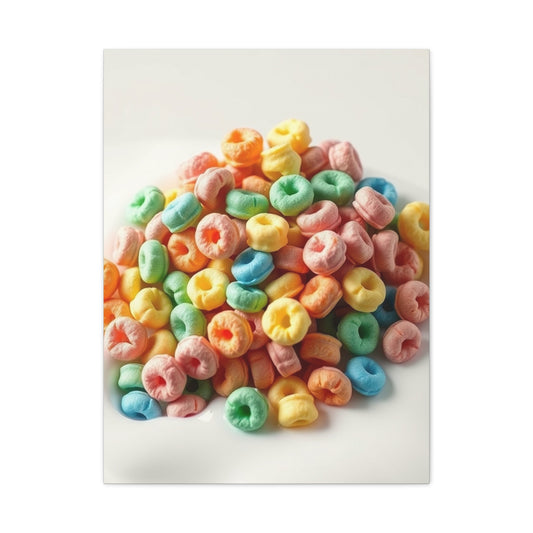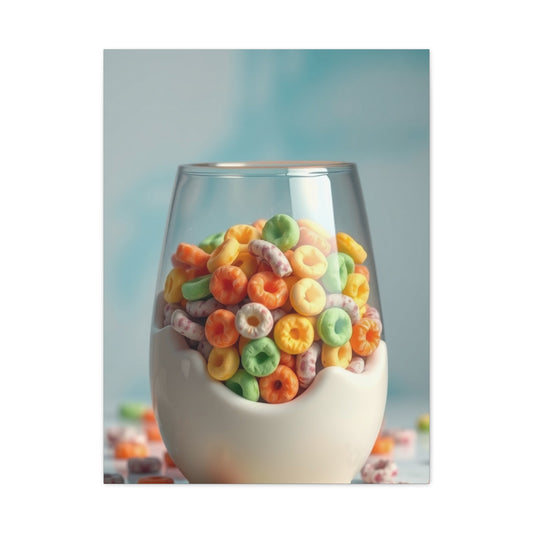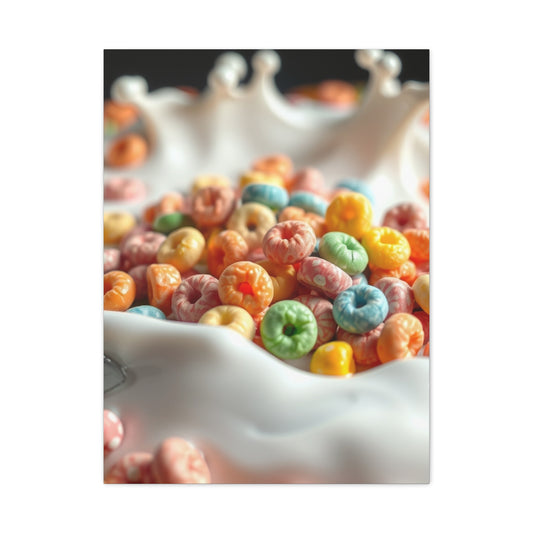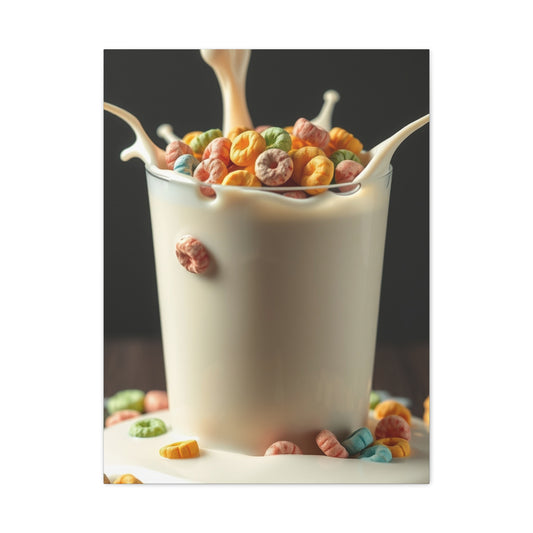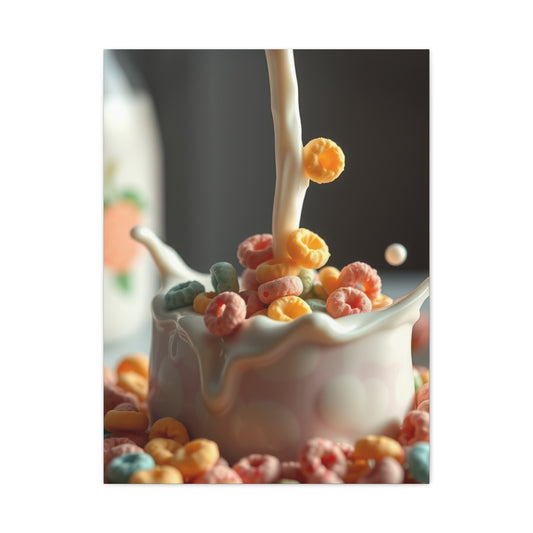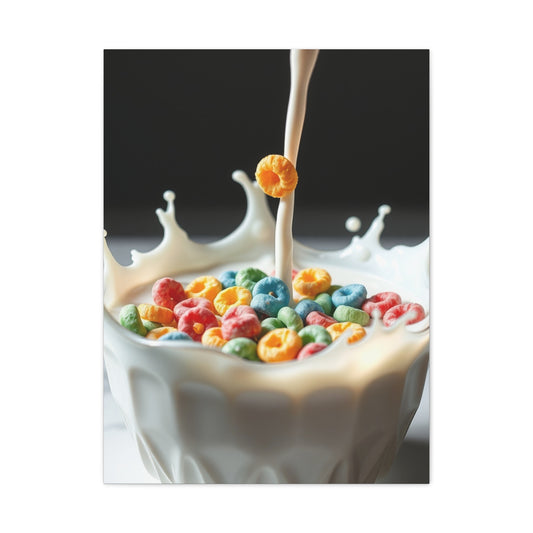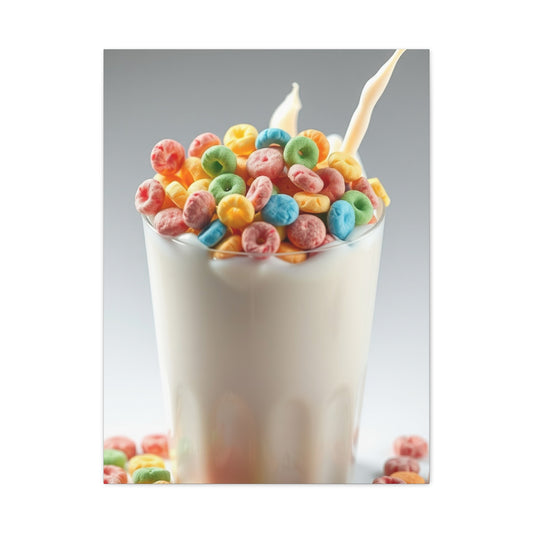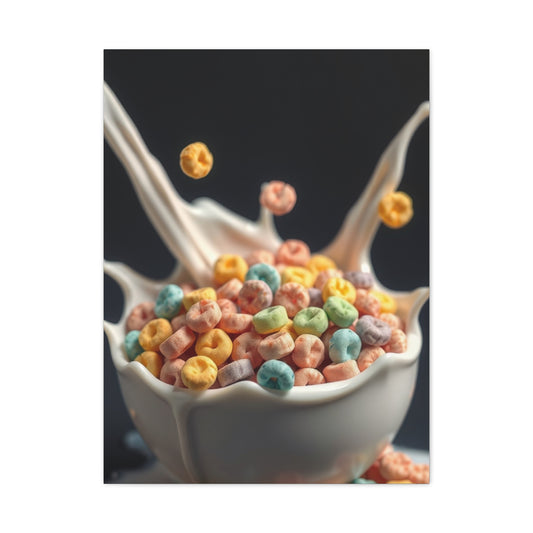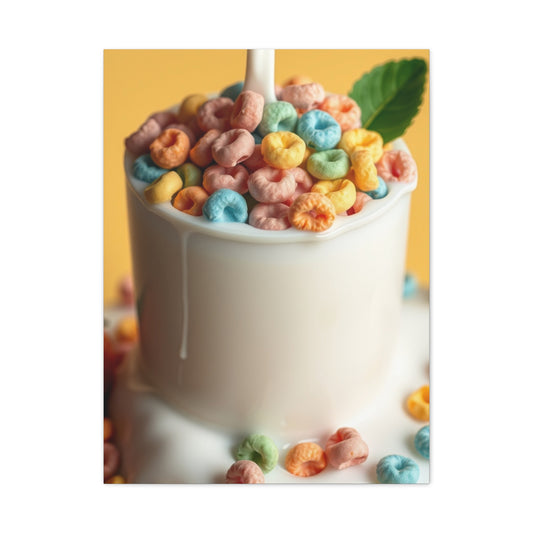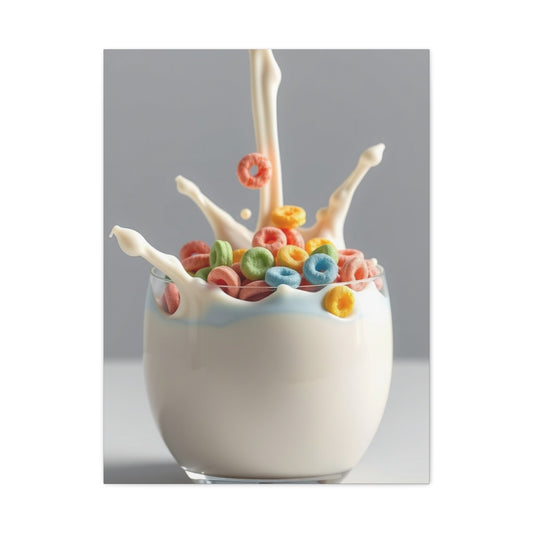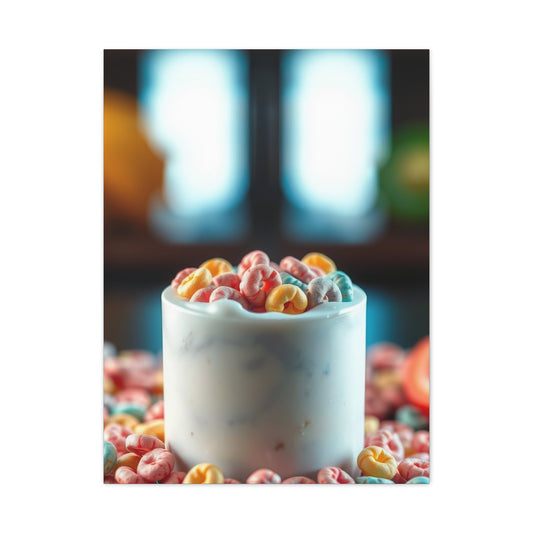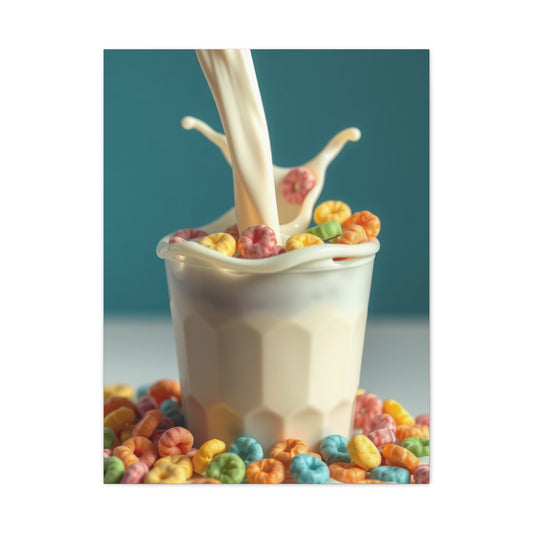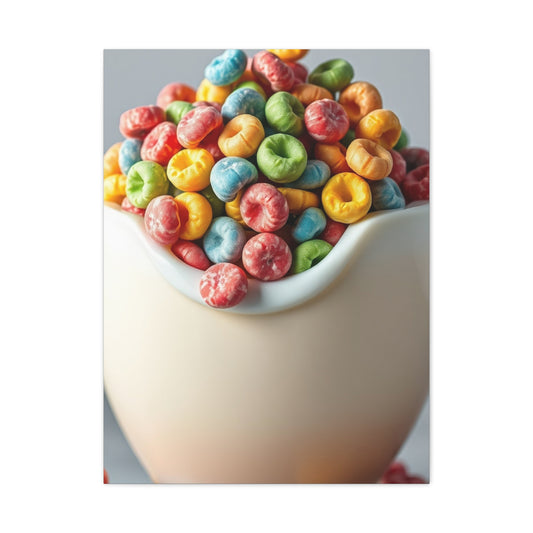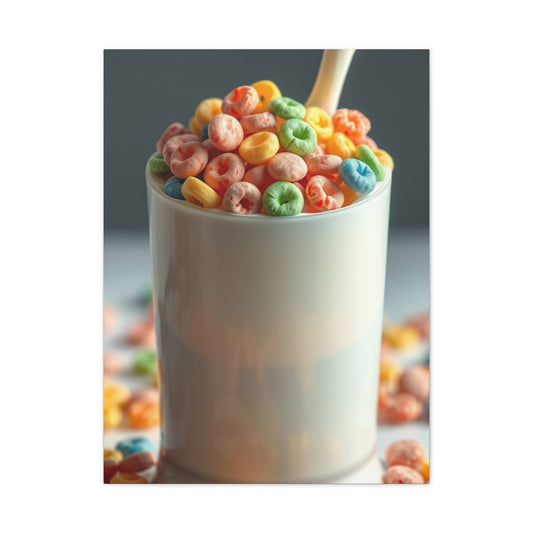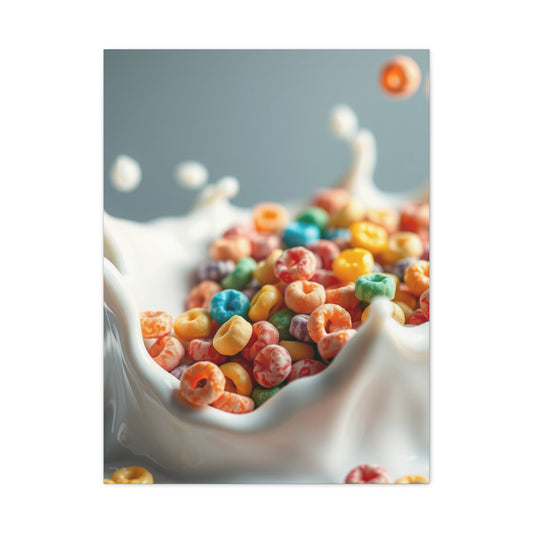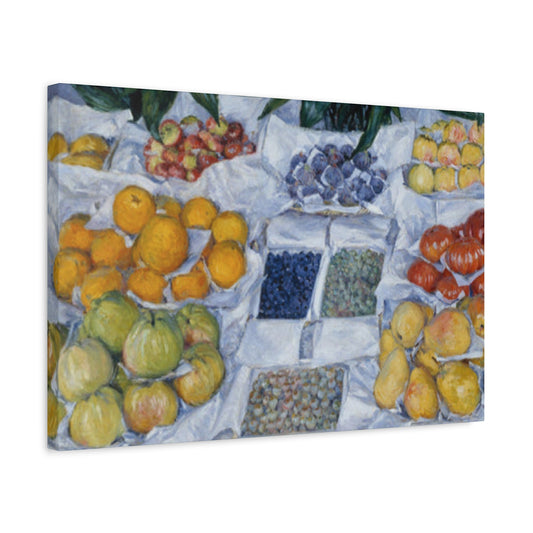Large Kitchen Wall Art: Creative Decor Trends for Modern Homes
The modern kitchen is no longer confined to the realm of pure functionality; it has become a curated environment where design, expression, and personal identity converge. Among the many design choices available, one of the most captivating opportunities lies in transforming the backsplash into a canvas for statement artwork. Far from being a mere protective surface behind counters, the backsplash today carries the potential to become a living piece of art that defines the atmosphere of the room. When thoughtfully chosen, it becomes the heart of the kitchen, a centrepiece where visual impact and practical application meet seamlessly. Within the wide range of kitchen wall art ideas, the backsplash offers perhaps the most versatile and dynamic approach, as it can reflect history, innovation, texture, and personality in equal measure.
Historical Background
The idea of decorating walls in kitchens stretches back centuries, though its form has shifted dramatically across cultures and epochs. In ancient Roman villas, the concept of the decorated hearth and cooking area was expressed through mosaics, which not only served functional purposes but also became symbols of prosperity and culture. These early mosaics often depicted mythological scenes or geometric patterns, elevating cooking spaces into semi-public venues where beauty was meant to be admired as much as sustenance was prepared.
Moving into the medieval and Renaissance periods, European kitchens leaned more towards functionality, yet the decorative tile found its way into cloisters and noble households, where brightly painted ceramics became common in Southern Europe. In Spain, Portugal, and Italy, glazed azulejos and maiolica tiles covered not just walls but entire surfaces, telling stories through pictorial imagery while protecting walls from smoke and soot.
The backsplash, as we now understand it—an intentional band of decorated material above the counter—emerged in the late 19th and early 20th centuries when kitchens started transitioning from utilitarian work zones to more integrated areas within the home. With the rise of decorative arts movements, patterned ceramic tiles, hand-painted motifs, and eventually glass panels gained popularity. By the mid-20th century, as open-plan living became fashionable, the aesthetic value of the backsplash grew even more important, bridging culinary activity with social interaction.
Today, in 2025, homeowners and designers revisit these traditions with fresh approaches, blending historical craftsmanship with cutting-edge technologies. Whether through vibrant mosaic tiles, metallic surfaces, or custom-printed panels, the backsplash continues to embody the evolution of kitchen wall art ideas while retaining its original protective purpose.
Core Concepts and Foundations
At its essence, statement backsplash artwork is built on the principle of merging durability with artistic intention. The foundation lies in material selection, surface treatment, and thematic consistency with the rest of the interior design. Materials must endure heat, moisture, grease, and frequent cleaning, yet they should also lend themselves to artistic experimentation. Ceramic, glass, metal, stone, and composite panels each bring their own visual and tactile qualities, dictating the direction of the artwork they host.
Equally important is the interplay between art and light. Unlike a static painting on a gallery wall, backsplash artwork interacts dynamically with natural daylight, artificial task lighting, and reflective surfaces. Metallic tiles shimmer at dusk, glass murals glow under under-cabinet LEDs, and textured ceramics cast delicate shadows that animate the kitchen throughout the day. This interaction transforms the backsplash into a living artwork that evolves with time and atmosphere.
The concept also embraces individuality. Unlike conventional wall art hung in living rooms, a backsplash is fully integrated into the architecture of the home. This integration allows for deeper personalisation, where themes might stem from cultural heritage, culinary passions, or simply an aesthetic impulse toward abstraction. In this way, statement backsplash artwork represents not just design but also identity, turning the kitchen into a narrative-driven space.
Types and Categories
When we examine the spectrum of backsplash designs, distinct categories emerge, each offering unique artistic possibilities while fulfilling practical needs.
Colourful Mosaic Tiles
Perhaps the most time-honoured approach, colourful mosaics bring vibrancy and intricate detail to a kitchen. Tiny tiles arranged into patterns or figurative scenes allow endless creativity. Some homeowners might commission a mosaic that mirrors natural landscapes, while others lean toward playful abstractions in vivid hues. The appeal of mosaic tiles lies in their tactile quality, the way grout lines create rhythm, and the sheer diversity of possible motifs. They not only protect the wall but also embody the spirit of craftsmanship, echoing ancient traditions while serving contemporary design ambitions.
Large-Scale Painting Under Glass
An avant-garde interpretation involves installing an entire painting as the backsplash, secured behind a layer of glass. This transforms the kitchen into an extension of an art gallery, where brushstrokes and colour fields become immersive. The glass ensures easy cleaning, making the artwork both functional and enduring. Such an approach highlights the growing trend of seeing kitchens as experiential spaces where art and daily life converge. For individuals passionate about painting or owning a beloved canvas, this method offers an opportunity to showcase it in a most unexpected environment.
Hand-Painted Ceramic Tiles
Hand-painted ceramics infuse the backsplash with character and authenticity. Unlike mass-produced tiles, each piece carries the mark of an artist’s hand, making the entire installation a unique composition. Whether it features delicate botanical motifs, bold geometric designs, or narrative scenes, the result is deeply personal. Local artisans can be commissioned to create designs tied to cultural roots or family heritage, giving the kitchen a deeply intimate dimension.
Three-Dimensional Textured Tiles
Texture adds a sensory element that goes beyond visual impact. Three-dimensional tiles can replicate the rugged surface of stone, the soft undulations of waves, or entirely abstract forms. By catching light differently across their surface, they introduce a dynamic quality that flat tiles cannot achieve. The tactile invitation of these tiles creates a sensory experience, making the backsplash more than just a visual feature—it becomes something you want to touch, enhancing the multi-sensory role of the kitchen.
Metallic Tiles
The use of metallic finishes introduces elegance and modernity. Stainless steel, copper, brass, and aluminium tiles play with reflectivity and warmth. Their shimmering surfaces change throughout the day as natural light shifts, creating a living artwork of subtle transformations. In minimalist or industrial kitchens, metallic tiles bring refinement, while in traditional settings, they provide a bold contrast. They embody resilience, radiance, and sophistication all at once.
Antique Tiles
Infusing history into the kitchen, antique tiles celebrate patina, imperfections, and nostalgia. They remind us of kitchens in Mediterranean villas or rustic countryside homes, where walls bore witness to centuries of cooking traditions. Installing such tiles means embracing a sense of continuity and cultural memory, weaving stories into modern living spaces. The irregularities and faded pigments become part of the charm, creating an environment that feels grounded in time yet alive with personality.
Glass Tile Murals
Glass brings luminosity and depth unmatched by other materials. When used to create murals, glass tiles depict anything from abstract patterns to vivid landscapes. Their ability to refract light means the mural never looks quite the same twice, producing a kaleidoscopic interplay that enlivens the kitchen. Glass murals are particularly suited to contemporary interiors where brightness and openness are celebrated.
Custom-Printed Backsplash Panels
Technology has opened new frontiers in design, allowing high-resolution images to be printed directly onto durable panels. From personal photography to digital artwork, these panels make it possible to embed cherished memories into the very architecture of the kitchen. The seamless finish ensures ease of cleaning while providing virtually limitless design opportunities. This innovation demonstrates how digital culture influences even the most traditional domestic settings, merging personal expression with everyday practicality.
Practical Applications
While artistic ambition drives statement backsplashes, their success ultimately depends on thoughtful application within the overall kitchen design. The first principle is harmony. A bold mosaic may demand muted cabinetry to avoid overwhelming the senses, while a minimalist glass panel might benefit from surrounding elements that provide warmth and contrast. The backsplash should neither dominate the space nor disappear entirely; its role is to anchor the design while allowing the room’s functionality to shine.
Placement and proportion are equally critical. In small kitchens, a vibrant backsplash can create a focal point that distracts from limited square footage, making the room feel expansive and lively. In large kitchens, backsplashes may stretch across vast walls, requiring careful consideration of continuity and repetition to avoid visual fatigue. Lighting design also plays a pivotal role. Under-cabinet LEDs can emphasise texture, while pendant lights can highlight colour or detail, ensuring the artwork remains visible and impactful even in the evening.
Maintenance considerations should never be underestimated. The choice of materials must withstand heat from stovetops, moisture from sinks, and the inevitable splashes of oil and sauces. Protective coatings, tempered glass, or naturally resilient surfaces ensure longevity without compromising artistry. This balance of durability and expression lies at the heart of kitchen wall art ideas for 2025, as homeowners increasingly demand both beauty and practicality in their living spaces.
Lastly, the backsplash must reflect the soul of the household. Whether through antique fragments that echo history, bold abstractions that signal creativity, or personalised panels that preserve family memories, the statement backsplash is an intimate dialogue between design and identity. It elevates the kitchen into a place of inspiration, reminding us daily that art need not be confined to galleries or living rooms. It can thrive where life is most active, at the very heart of the home.
A gallery wall in the kitchen is more than an assemblage of images or objects; it is a curatorial expression of memory, taste, and creativity. Unlike traditional living room galleries, which often showcase a single stylistic theme, a kitchen gallery wall allows for an eclectic mix that reflects culinary passion, family history, and personal aesthetics. It serves as a conversation starter, a mood-setter, and a visual feast that parallels the sensory experiences of cooking and dining. Within the broader spectrum of kitchen wall art ideas, the gallery wall offers unparalleled flexibility, enabling homeowners to weave narratives that resonate deeply with daily life.
Techniques and Methods
The success of a kitchen gallery wall lies in careful planning and an understanding of spatial harmony. While the artistic impulse might suggest spontaneity, the most compelling galleries are often the result of deliberate placement, proportion, and balance.
One of the most enduring techniques is the grid arrangement, where artworks are hung in precise alignment, creating a sense of order even within diverse subject matter. This method works particularly well in modern kitchens, where minimalism and geometry dominate the design ethos. In contrast, the salon-style arrangement embraces asymmetry, layering frames of different sizes and shapes to create a dynamic visual rhythm. This technique, reminiscent of historic European salons, imbues the kitchen with a sense of abundance and creativity.
Framing choices also play a critical role. Simple black or white frames can unify disparate artworks, while ornate frames introduce a touch of drama. Floating frames provide a modern edge, allowing photographs, paintings, or prints to appear suspended in space. For an even more integrated effect, some designers use frameless canvases, letting the artwork itself dictate the character of the display.
A method gaining popularity involves thematic zoning. Here, different sections of the gallery wall reflect distinct aspects of culinary life. One zone might feature botanical prints of herbs, another dedicated to family photographs taken during celebrations, while another highlights abstract works that echo the colours of the kitchen. This compartmentalisation transforms the wall into a curated exhibition, each segment telling a different story.
Lighting is equally important. Directional spotlights or track lighting accentuate texture and colour, while softer ambient lighting creates warmth. In kitchens where natural light floods in, artworks must be positioned thoughtfully to avoid fading or glare. Protective glass with UV filters ensures longevity without sacrificing visual clarity.
Finally, scale is a decisive factor. In compact kitchens, small clusters of artworks arranged vertically can draw the eye upward, creating an illusion of height. In larger kitchens, expansive walls can host oversized canvases interspersed with smaller pieces, balancing drama with intimacy. The key is always proportion: the artworks must engage the space without overwhelming it.
Challenges and Common Mistakes
While the idea of a kitchen gallery wall is alluring, its execution is fraught with potential pitfalls. One of the most common mistakes is overcrowding. The temptation to fill every inch of wall space often results in visual chaos, leaving the viewer with no focal point. Successful galleries allow breathing room, enabling each piece to be appreciated on its own terms while contributing to the whole.
Another frequent challenge is a lack of cohesion. Mixing artworks without a unifying thread—whether in colour palette, subject matter, or framing—can lead to a disjointed appearance. While eclecticism has its charm, it requires subtle curation to avoid descending into randomness. A consistent undertone, perhaps through recurring colours or repeated motifs, helps weave disparate elements together.
Material durability poses another challenge, especially in kitchens where heat, moisture, and grease are constant companions. Delicate paper prints or unprotected canvases may warp or stain over time. Using sealed frames, protective glass, or durable substrates such as metal prints or laminated surfaces ensures longevity. Neglecting this consideration often leads to deterioration, undermining the artistic investment.
Lighting missteps are also common. Harsh, direct lighting can cause glare, while poor illumination leaves artworks dull and lifeless. Similarly, placing artworks too close to cooking zones without proper protection risks permanent damage. A gallery wall should be positioned strategically, avoiding splatter zones while remaining visually central.
Finally, scale misjudgment often disrupts balance. Hanging oversized pieces in a cramped corner or scattering tiny artworks across a vast wall diminishes their impact. Proper measurement, mock layouts on the floor, or even digital visualisation tools can prevent these errors.
Trends and Future Outlook
As design evolves, so too does the concept of the kitchen gallery wall. In 2025, several key trends will shape the way homeowners and designers approach this artistic medium.
One emerging trend is the integration of digital art. With the advent of high-resolution digital frames, kitchens can now host galleries that change at the touch of a button. These displays allow rotation of family photos, culinary-themed artworks, or seasonal imagery, offering versatility and adaptability. The digital gallery wall reflects our increasingly fluid relationship with art, where changeability is as valued as permanence.
Sustainability also plays a pivotal role. Eco-conscious homeowners are turning to recycled materials, organic inks, and locally sourced artworks to curate walls that are not only beautiful but also environmentally responsible. Upcycled objects such as reclaimed wood panels, vintage utensils, or old recipe cards find new life as wall art, creating galleries that blend memory with sustainability.
Another trend is the rise of interactive gallery walls. Chalkboard panels, magnetic boards, and modular shelving allow for continuous evolution, where residents can swap out artworks, jot down recipes, or display seasonal produce. This approach makes the gallery wall a living, breathing feature that evolves alongside the household.
The influence of global aesthetics is also notable. From Japanese minimalism with its focus on negative space and natural materials, to Moroccan-inspired tiles that bring intricate geometry and colour, cross-cultural references are becoming central to gallery wall design. This eclecticism mirrors the globalised nature of cuisine itself, where kitchens are sites of cultural exchange.
Looking forward, technology promises even more radical possibilities. Augmented reality may allow homeowners to preview potential gallery arrangements virtually, while smart surfaces might one day display artworks digitally without the need for frames. The convergence of tradition and innovation ensures that the kitchen gallery wall will remain a fertile ground for experimentation.
Expert Insights
Designers and artists consistently emphasise the emotional resonance of gallery walls. According to many interior experts, the kitchen gallery wall succeeds when it reflects authenticity rather than trend-following. A framed recipe card in a grandmother’s handwriting can carry as much impact as a museum-quality print, precisely because it connects the present to personal history. Experts remind us that art in domestic spaces is not about prestige but about meaning, and nowhere is this truer than in the kitchen.
Another insight is the importance of adaptability. Experienced designers note that kitchens are high-traffic areas where tastes evolve, families grow, and lifestyles shift. Thus, gallery walls must be designed with change in mind. Using easily replaceable frames, modular layouts, or adaptable digital displays allows the collection to evolve organically rather than remain static.
Curators of contemporary interiors also stress the role of narrative. A gallery wall is most compelling when it tells a story, whether that story is of culinary heritage, travel adventures, or artistic experimentation. Experts often encourage homeowners to think like curators, asking: what story do I want this wall to tell, and how do the chosen pieces contribute to that narrative?
From a practical perspective, conservation specialists advise on materials. They highlight the importance of archival-quality papers, UV-resistant glass, and moisture-resistant frames to preserve artworks in the challenging environment of the kitchen. Without such measures, even the most carefully curated wall can deteriorate.
Finally, psychologists studying environmental design underscore the impact of gallery walls on mood. Surrounding oneself with meaningful art in the kitchen has been shown to enhance creativity, reduce stress, and even elevate the dining experience. The kitchen, often called the heart of the home, becomes even more nurturing when adorned with art that resonates emotionally.
The kitchen gallery wall is a testament to how domestic design continues to evolve in imaginative ways. It transcends mere decoration, becoming a form of storytelling that intertwines daily routines with personal expression. Through careful techniques, avoidance of common mistakes, and awareness of emerging trends, homeowners can create gallery walls that are both beautiful and enduring. With expert insights guiding choices, the gallery wall emerges as one of the most compelling kitchen wall art ideas of 2025, bridging the practical and the poetic, the personal and the universal.
A small kitchen often carries with it an unspoken limitation: the assumption that restricted square footage diminishes creative opportunity. Yet, as design philosophies evolve, these very constraints are being reimagined as pathways to innovation. When it comes to kitchen wall art ideas, compact spaces reveal a unique capacity for intimacy, cleverness, and ingenuity. Rather than overwhelming walls with oversized canvases or elaborate installations, small kitchens invite subtle compositions, ingenious use of vertical surfaces, and art that doubles as function. These choices allow homeowners to cultivate an atmosphere where every detail resonates with intent. In 2025, the dialogue between space and creativity has grown increasingly sophisticated, turning the petite kitchen into a stage for aesthetic ingenuity.
Emerging Trends in Wall Art
Design trends are never static; they ebb and flow, often influenced by broader cultural shifts, technological innovations, and ecological awareness. Within the sphere of small kitchen wall art ideas, several emerging currents have captured the imagination of designers and homeowners alike.
One compelling trend is vertical orientation. As urban apartments and compact homes dominate contemporary living, designers have embraced the vertical dimension as a canvas for expression. Instead of spreading artworks horizontally across limited walls, pieces are now arranged in ascending sequences, creating the illusion of greater height while adding rhythmic elegance. This approach has a transformative quality, making a modest kitchen feel grander than its square footage suggests.
Another evolving tendency is the integration of functional art. In small kitchens, utility cannot be sacrificed, yet functionality need not be sterile. Wall-mounted pieces that double as storage solutions—such as magnetic knife strips designed with artistic flair, or chalkboard panels adorned with hand-drawn illustrations—are now at the forefront of design. These artworks embody a harmonious union of form and function, turning everyday tasks into moments of creativity.
The sustainability movement has also made a marked impact on small kitchen décor. Homeowners increasingly gravitate toward upcycled art, crafted from reclaimed wood, vintage utensils, or fragments of ceramics. These works are not only environmentally conscious but also carry an aura of history and authenticity. A wall adorned with art fashioned from reimagined materials narrates a story that intertwines sustainability with artistry, reinforcing the cultural shift toward mindful living.
Digital influence has permeated this sphere as well. Compact digital frames, now more affordable and energy-efficient, enable small kitchens to host rotating galleries. Instead of committing to a single print or painting, these frames allow for dynamic curation: botanical sketches one day, vibrant abstracts the next. For spaces where permanence is a challenge, this adaptability is particularly valuable.
Cultural eclecticism continues to shape the aesthetic vocabulary of small kitchens. Influences from Scandinavian minimalism, with its emphasis on clean lines and muted palettes, blend with Japanese wabi-sabi philosophy that celebrates imperfection and organic textures. Meanwhile, bursts of Moroccan tile-inspired motifs bring exotic vibrancy to otherwise subdued spaces. This interplay of global aesthetics reflects not just a decorative impulse but the cosmopolitan realities of modern life.
Lastly, micro-galleries have emerged as a celebrated concept. Rather than a sprawling collection, small kitchens embrace curated clusters of mini artworks. These clusters may include miniature canvases, framed recipe cards, or delicate botanical illustrations. The charm lies in scale: intimate enough to be observed up close, yet impactful enough to define the room’s mood.
Step-by-Step Guides
Step 1: Assessing the Space
The process of creating wall art in a small kitchen begins with an honest evaluation. Consider the physical dimensions, the available wall surfaces, and the interplay of natural and artificial light. Identify areas that are functional and avoid zones prone to splashes, such as directly behind the stove or sink, unless protective glass or moisture-resistant materials are employed.
At this stage, it is essential to ask: What is the desired atmosphere? Should the kitchen feel bright and expansive, cosy and rustic, or sleek and modern? This decision anchors the artistic choices that follow, ensuring that the final result is coherent rather than haphazard.
Step 2: Choosing the Theme
Themes give cohesion to even the smallest spaces. A small kitchen wall may be transformed into a botanical haven, with delicate prints of herbs and spices. Alternatively, it might lean toward abstract geometry, where clean lines and muted colours echo the cabinetry and countertops. For families with strong culinary traditions, a theme rooted in personal heritage—such as framed recipe cards or family photographs—imbues the wall with meaning.
Selecting a theme early on prevents clutter and strengthens the impact of the chosen artworks.
Step 3: Curating the Artworks
Once a theme is established, the next step is curation. Small kitchens demand restraint; fewer pieces often speak louder than an overcrowded wall. Consider varying mediums to add texture and depth. A single canvas may be complemented by a framed photograph, or a ceramic plate may hang beside a small abstract sketch. The juxtaposition of media introduces intrigue without requiring excessive space.
At this stage, framing choices become critical. Slim frames or frameless mounts preserve a sense of openness, while heavier frames may work when a more dramatic statement is desired.
Step 4: Mapping the Layout
Before any nails are hammered, it is wise to map out the layout. This can be done by arranging artworks on the floor to test configurations or using removable paper cutouts to visualise scale and placement. In small kitchens, symmetry often creates a calming effect, while asymmetry can lend dynamism and energy. Vertical arrangements are particularly effective, drawing the eye upward and counteracting the limitations of narrow walls.
Step 5: Enhancing with Lighting
Light transforms art, particularly in compact spaces where brightness affects perception of scale. Task lighting installed under cabinets can highlight artworks placed nearby, while pendant lights may cast subtle shadows that enhance texture. When natural light plays a role, consider positioning pieces to avoid direct sun exposure that could cause fading.
Step 6: Incorporating Functionality
Functional art should not be overlooked. A chalkboard framed elegantly can serve as both a daily planner and a creative outlet for sketches or quotes. Magnetic boards can display rotating photographs or recipe notes, adding adaptability to the wall. Incorporating hooks or rails into the art arrangement allows for practical storage while preserving aesthetic integrity.
Step 7: Personalisation
Perhaps the most rewarding stage is personalisation. Here, the wall reflects the household’s story—whether through a collage of travel photos, hand-painted tiles by children, or artworks collected from local markets. The kitchen becomes more than a utilitarian zone; it becomes a space charged with memory, identity, and emotion.
Step 8: Maintenance and Longevity
Finally, maintenance ensures the durability of the chosen artworks. In kitchens, grease, moisture, and heat are inevitable. Protective coatings, washable surfaces, or glass enclosures preserve the integrity of delicate pieces. Art should inspire daily, not cause anxiety over damage. With proper care, even a modest wall arrangement can endure for years, becoming a fixture of the home’s atmosphere.
Small kitchens demand more ingenuity than their expansive counterparts, yet they offer unparalleled opportunities for artistry and intimacy. Emerging trends in wall art point toward vertical arrangements, functional integration, sustainability, digital adaptability, and global eclecticism. Through step-by-step methods—assessing space, selecting themes, curating artworks, mapping layouts, enhancing with lighting, and embracing personalisation—homeowners can craft walls that are not merely decorative but deeply expressive. These kitchen wall art ideas illustrate that size is never a limitation to creativity. Instead, compactness becomes a catalyst for innovation, encouraging choices that are thoughtful, personal, and enduring. As 2025 unfolds, the small kitchen stands as a testament to the evolving relationship between art, space, and everyday life, proving that beauty thrives even in the most modest dimensions.
Large kitchens provide an entirely different landscape for creativity compared to compact ones. Where smaller areas emphasize subtlety and clever space management, expansive kitchens invite bold expression, grandeur, and daring compositions. The sheer breadth of open wall surfaces within a spacious kitchen becomes a canvas where artworks do not merely decorate but dominate, establishing the tone of the entire environment. Large kitchen wall art idea, therefore, reserve not as accessories but as central statements, infusing the room with scale, drama, and personality.
In homes where the kitchen has become the true nucleus of daily life, no longer confined to culinary function but extended into a realm of gathering, entertaining, and socialising, large-scale wall art emerges as a storytelling medium. It projects the character of the household, whether through striking abstracts, panoramic landscapes, monumental murals, or oversized photography. These artworks resonate with expansiveness, echoing the dimensions of the space while intensifying its atmosphere.
The Impact of Scale
When discussing large kitchen wall art ideas, the first concept to explore is the power of scale. Unlike smaller pieces that blend into their surroundings, oversized works demand attention and alter the perception of proportion within a room. A single expansive canvas may transform a plain wall into a focal point, lending coherence and gravity to the entire layout.
Scale also influences mood. Vast abstract fields of colour can generate serenity, while monumental black-and-white photography may imbue the space with drama. Panoramic cityscapes or sprawling countryside vistas can introduce depth and perspective, making even a cavernous kitchen feel more immersive and inviting. Understanding how scale interacts with architectural features such as ceilings, cabinetry, and windows ensures that the chosen artwork does not overwhelm but harmonises with the existing structure.
Styles and Themes in Large Kitchen Wall Art
Within large kitchens, diverse styles of wall art can be employed, each generating a distinct narrative.
Abstract Expression
One prevalent approach is abstract expression, where broad strokes, intense hues, and textured surfaces create emotional resonance. Large abstract canvases complement modern kitchens, amplifying the sleek minimalism of steel appliances and monochromatic cabinetry. Their ambiguity allows for multiple interpretations, ensuring the artwork evolves with the viewer’s mood.
Panoramic Landscapes
Expansive landscapes are another compelling theme. A wall adorned with a vast ocean view, rolling hills, or dense forests brings an element of the outdoors into the culinary domain. In a modern world where people crave connection to nature, these artworks act as psychological windows, refreshing the atmosphere while anchoring the space in tranquility.
Culinary Narratives
Artworks that directly reference culinary traditions also find a natural home in large kitchens. Oversized prints of vintage produce posters, monumental still-life paintings of fruits and vegetables, or murals inspired by markets and harvest scenes integrate seamlessly with the room’s purpose. They elevate food beyond sustenance into artistry, celebrating its cultural significance.
Photographic Dramas
Large-scale photography, with its ability to capture minute details at monumental proportions, has gained increasing popularity. Close-up textures of spices, macro images of herbs, or portraits of cultural kitchens across the globe offer both aesthetic appeal and narrative depth. Such images function as global storytellers, linking domestic cooking to universal culinary traditions.
Eclectic Murals
Murals allow large kitchens to become immersive experiences. Painted directly onto walls, murals range from botanical flourishes to modern graffiti-inspired compositions. Their permanence gives them authority, and their expansive reach makes them inseparable from the architecture of the room. In recent years, artistic collaborations with muralists have transformed kitchens into gallery-like settings.
Techniques for Display
Displaying large kitchen wall art requires careful technical consideration.
Proportion and Placement
The placement of oversized works must acknowledge the surrounding architecture. A painting hung too high risks losing intimacy, while one too low disrupts functionality. Optimal placement aligns the centre of the artwork with the average eye level, creating harmony with cabinetry and appliances.
Lighting Considerations
Illumination plays a pivotal role. Large works absorb and reflect light differently than smaller pieces, demanding a strategic interplay of natural daylight and artificial fixtures. Track lighting or wall-mounted spotlights allow for emphasis, ensuring that the artwork’s subtleties are not lost within the expansive room.
Material Selection
Because kitchens expose art to humidity, heat, and occasional splashes, selecting resilient materials is vital. Canvas with protective varnish, aluminium prints, or sealed wood panels provide durability. For murals, moisture-resistant paints extend longevity. These practical choices safeguard the investment while preserving visual integrity.
Psychological and Social Dimensions
Large kitchen wall art not only reshapes space but also influences psychology and social interaction. A monumental artwork often serves as a conversational catalyst during gatherings, inspiring dialogue and reflection. Guests are drawn to its scale and detail, naturally gravitating toward it as a point of interest.
The choice of imagery also reflects identity. A household that selects vast abstract forms may project a love of modern innovation, while panoramic seascapes reveal an affinity for serenity and escape. In this sense, large artworks become portraits of the household itself, externalising personal values in a manner both intimate and public.
Trends in Large Kitchen Wall Art
Current design directions highlight bold experimentation.
Immersive Murals and Installations
Immersive experiences continue to rise, with mural art and mixed-media installations transforming kitchens into immersive environments rather than rooms with decorative accents. Metallic finishes, three-dimensional textures, and luminous paints that respond to changing light conditions represent an evolution beyond two-dimensional imagery.
Global and Cultural Influences
As cultural exchange intensifies, large kitchen wall art increasingly draws inspiration from diverse traditions. From Mediterranean tile motifs expanded to monumental scales, to Japanese ink-inspired murals, to African textile patterns translated into oversized prints, these influences bring cosmopolitan richness into the home.
Minimalist Monoliths
At the opposite end of the spectrum, some homeowners embrace minimalist monoliths—single, vast works of restrained design. A large monochrome painting or a photograph reduced to elemental tones reinforces a sense of calm, allowing the kitchen to radiate serenity rather than exuberance.
Interactive Digital Walls
Technological advances have introduced interactive digital panels capable of displaying ever-changing artworks. These installations allow homeowners to curate rotating exhibitions, providing flexibility without the permanence of physical murals. This trend reflects the growing desire for adaptability in home design.
Practical Applications
In practice, large kitchen wall art ideas require balance. The artwork should command attention without overshadowing the kitchen’s function. Placement opposite dining zones or seating areas often proves effective, as it encourages guests to interact visually while remaining unobstructed from the bustle of cooking.
Integration with architectural details can further enhance coherence. An expansive artwork aligned with a central island creates symmetry, while murals wrapping around corners blur boundaries between wall and art. Pairing large art with smaller complementary pieces also provides layering, ensuring that grandeur does not become monotony.
Conclusion
Kitchen wall art, whether in compact or expansive settings, represents more than surface adornment. It has become a medium through which space acquires identity, narrative, and emotional resonance. The journey from statement backsplashes to functional small-scale clusters and monumental large-scale installations illustrates the diversity of artistic approaches available to contemporary homeowners.
Large kitchen wall art in particular embodies the boldness of modern living. It transforms walls into monumental storytellers, turning everyday culinary routines into experiences framed by creativity. Through choices of scale, style, placement, and material, these artworks transcend decoration to become central forces within domestic architecture.
Across all forms—small or large, abstract or representational, functional or purely aesthetic—kitchen wall art affirms that art is not confined to galleries or salons. It thrives in the very heart of the home, woven into the rhythms of cooking, conversation, and community.
As trends evolve, from immersive murals to interactive digital walls, the kitchen continues to serve as a frontier for innovation. It is a space where artistry merges seamlessly with function, where tradition converses with modernity, and where individuality asserts itself against the backdrop of daily life.
Ultimately, the story of kitchen wall art is one of transformation. Modest corners become micro-galleries, expansive walls become canvases for imagination, and kitchens themselves emerge as living artworks. In 2025 and beyond, this evolution will only deepen, ensuring that no kitchen remains a mere workspace—it becomes, instead, a gallery of lived experience, a theatre of memory, and a canvas for creativity.

